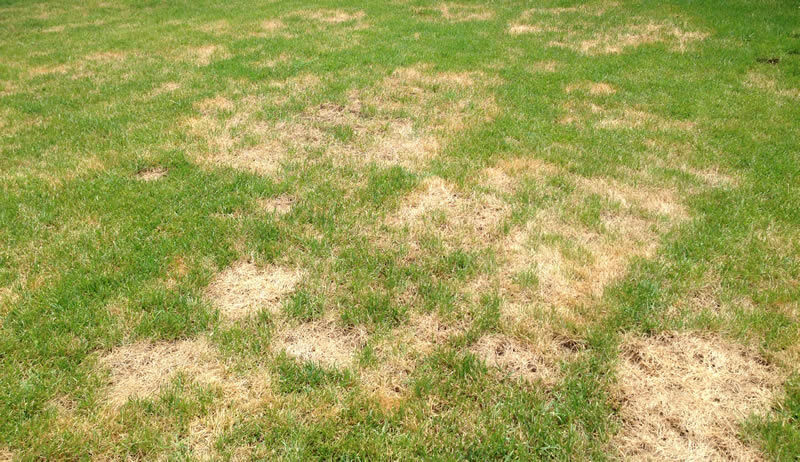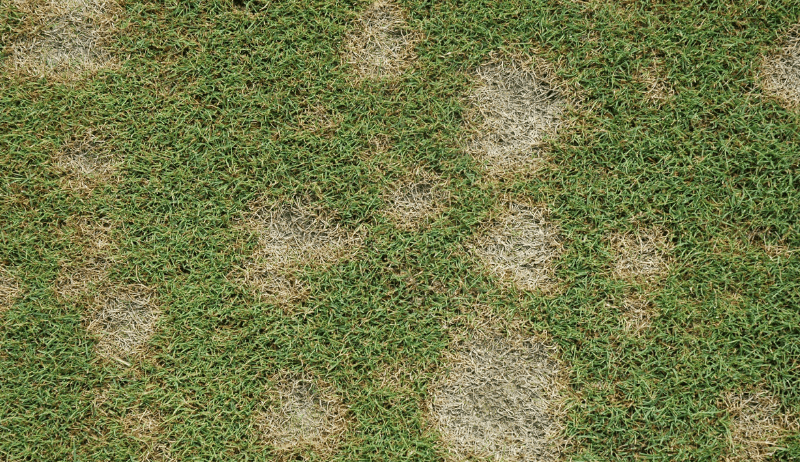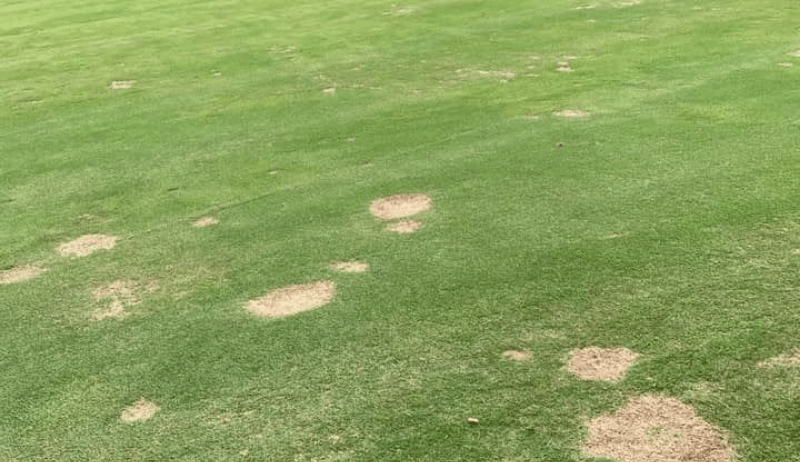We don’t always think of our lawn as a living, breathing organism, but that’s exactly what it is! And like all other living things, it’s susceptible to disease.
Grass diseases are a common problem for homeowners, and they can lead to unsightly damage in your yard. Diseases vary by grass type, location, and climate, and we have a handful of diseases that are fairly prevalent among Alabama lawns.
Learn how to spot these common diseases that could affect your lawn, and know what steps to take to prevent or treat them.
Brown Patch
What Is It?
Brown patch is one of the most common, widespread grass diseases in the state. It’s caused by the Rhizoctonia solani fungus, which thrives in hot, humid conditions. Considering our summer climate, you can see why Alabama lawns are at a high risk.
What Does It Look Like?
Brown patch may start as spots on leaf blades. Those spots will eventually bleed together over a large area of your yard, creating a large “brown patch” of dead grass with a dark parameter.

What Can You Do?
Brown patch can be difficult to control or prevent in our state. However, there are a few things you can do at home to keep the disease at bay:
- Mow frequently at the proper height with sharp blades. This will help promote air movement between the blades of grass.
- Do not water in the late afternoon.
- Bag lawn clippings to keep disease from potentially spreading
- Avoid high nitrogen rates during the warm months.
Dollar Spot
What Is It?
Dollar Spot another highly common disease that’s caused by Sclerotinia homeocarpa fungus. It often appears during the growing season when the days are warm and the nights are cool.
What Does It Look Like?
Dollar Spot gets its name from the tiny, straw colored patches it produces in your lawn. Theses patches are often round and range in size from a quarter to a silver dollar (hence the name). You may sometimes notice small, cotton –like strings growing from the blades.

What Can You Do?
To prevent or reduce Dollar Spot in your yard, take these steps:
- Mow at the recommended height and try not to remove more than 1/3 of leaf surface.
- Keep your lawn well-watered, but avoid watering in the late afternoon and evening. Do not overwater your yard.
- Improve drainage by top-dressing with compost or manure.
- Aerate your lawn so it can breath and move water
Spring Dead Spot
What Is It?
Spring Dead Spot affects mostly Bermudagrass lawns. It can be caused by a handful of different pathogens, but the most prevalent one in the Southeast is Ophiosphaerella korrae. Above average rainfall during late winter and spring can cause higher occurrences of this disease.
What Does It Look Like?
As your turfgrass “greens up” during the growing season, you’ll notice well-defined, circular patches of dead, bleached grass. These patches can grow quite large and in multiple spots in your lawn.

What Can You Do?
To prevent Spring Dead Spot in your yard, take these steps:
- Fertilize to meet nutritional needs of grass, but not to excess
- Aerate and mow to prevent thatch buildup and reduce soil compaction
- Utilize a pre-emergent fungicide before the growing season
- For those of us in the Southeast, studies have shown that using calcium nitrate can help prevent the spread of Spring Dead Spot.
Control All Turfgrass Diseases With ENVYLawn
If you suffer from any of these turfgrass diseases, or want to prevent them from invading your yard, call the experts at ENVYLawn. We provide highly effective disease control services that will treat and prevent the common turfgrass diseases in Alabama. Give us a call at 256-820-4633 or send us a message on our website. We guarantee our work will have the whole neighborhood green with envy!

